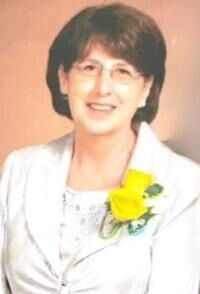Daily News adds popular Sudoku number puzzle
Published 12:00 am Monday, December 26, 2005
Beginning today, those who are cuckoo for the internationally acclaimed puzzle game Sudoku will have another outlet for their obsession – the Daily News.
The typical Sudoku (pronounced soo-doe-koo) format is a nine-by-nine grid of nine three-by-three boxes. To finish a puzzle, numbers one through nine must be used only once in each column, row and three-by-three box. The amount of numbers given to work a puzzle determines its difficulty level.
Trending
“We hope our readers find the puzzle entertaining and challenging,” said Mike Alexieff, managing editor of the Daily News. “The puzzles will run seven days a week in the classifieds section. The index at the bottom right of Page 1 will tell what page it is on. The neat thing about our version is that it increases in difficulty as the week progresses.”
Scottsville resident Jeff Duncan said he is happy the Daily News decided to carry Sudoku. He said he’s been hooked for a couple months since its debut in Nashville’s The Tennessean. Duncan and his ilk have made the Sudoku displays at Bowling Green’s Barnes & Noble Booksellers highly profitable.
“Every time I come in, I look to see if they have any new ones,” said Duncan, 46. “I like those a whole lot better than the crossword puzzles.”
The puzzles are prominently displayed in the store.
“We got an order from the powers that be to put up a table in the main entrance,” said Stephanie Austin, a book seller with Barnes & Noble.
Austin was a little skeptical about the game, but a teaser sign on the store’s window soon triggered steady re-stocking. She said “Do you Sudoku? For Kids” was a popular stocking stuffer. Titles such as “Sudoku for Dummies” and “The Mammoth Book of Sudoku” swell the display.
Trending
Store Manager Natalie Boddeker said she was introduced to the game at a managers’ conference in September.
“They gave us free copies of the books and we all got addicted,” Boddeker said. “It’s a huge logic game. It’s good to get your brain going.”
Her hobby spread to the home front. She hesitantly explained her family’s puzzle habits, resisting anticipated nerd branding. Boddeker said her step-children “do the junior ones that we have in the kids’ section,” her husband handles the difficult levels, while she sticks with the moderate puzzles.
Emily Peeler, a sophomore at Bowling Green High School, said she saw the game in a magazine then played it online with a friend. She said it took them nearly two hours to complete one of the harder puzzles.
Duncan’s playing habits are more fluid, as he uses the beginner newspaper puzzles to prep for timed versions online.
“I’ve got books and play online and waste a lot of time,” said Duncan, as he shuffled through puzzles at the display table. “It is addictive.”
In an interview earlier this year, David Smith of the Observer (United Kingdom) said he is familiar with this kind of fixation.
“It’s a sort of mental virus, analogous to the way a biological virus quickly spreads from person to person,” said Smith, evoking a common Sudoku simile.
Eating brain matter and lacking a cure, the game plagued Britain like mad cow disease, and Smith wrote one of many articles that sealed Suduko in the country’s pop culture. He said the game has spanned the globe “on a 25-year-old journey to Tokyo, London and back to New York.”
New York’s Dell Puzzle Magazines conceived it in the 1970s as “Number Place,” but Japanese publisher Nikoli modified and renamed it Sudoku, which means “single number.” It ultimately traces to 18th-century Swiss mathematician Leonhard Euler, according to Smith, although his rudimentary “Latin Squares” did not subdivide nine squares like today’s edition.
The Sudoku virus threatens to infect Daily News patrons with no immunity. You have been warned.






